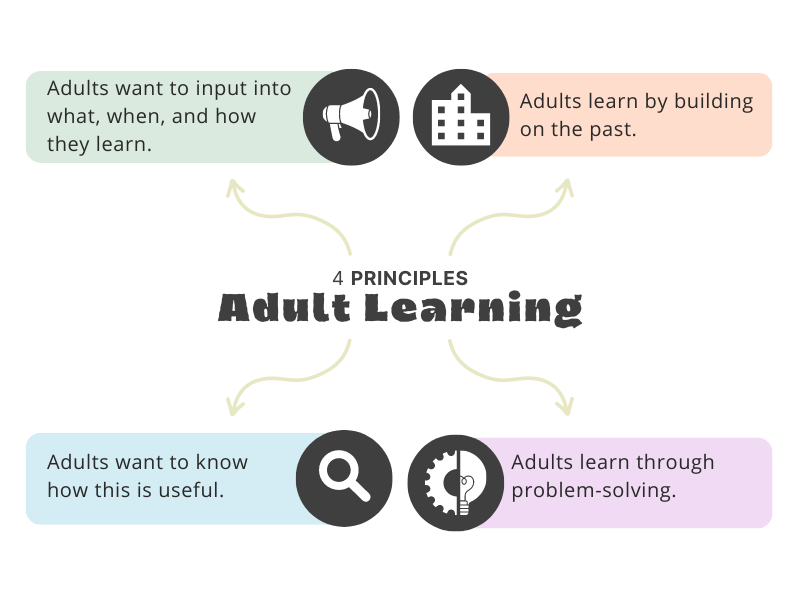Think back to when you were in Primary school or High school. Ask yourself, What did I learn? How did I learn? Why was I learning it?
Now, think about a recent time when you were trying to learn something.
Chances are, your answers to all those questions have changed. It’s no surprise that children learn differently from adults. Understanding how adults learn is an important step for anyone wanting to teach, train or develop content for adults, either face to face or online. The theory of adult learning is called Andragogy.
In this article, we’ll discuss what is adult learning and how you can use it in your courses.
What is Andragogy?
Children and adults learn in very different ways. For example, adults tend to be more self-directed and internally motivated, while children as more instructor lead and externally motivated. Andragogy is a learning theory, developed by Malcolm Shepard Knowles, which outlines some of the unique learning styles and strengths of adult learners.
Knowles’s theory contains 5 key assumptions and 4 principles.
5 key assumptions
1. Self-Concept
As we get older we become more independent and aware of ourselves. As such we start to prefer a more self-guided learning experience as opposed to an instructor lead experience.
2. Past Learning Experience
As we learn we reference our past experience and draw on previous knowledge.
3. Readiness to Learn
Many of us are able to see value in our learning which makes us take it seriously
4. Practical Reasons to Learn
As adults, we look to apply what we learn. Rather than just learning theory we want to learn practical skills that help us solve problems and work efficiently.
5. Driven by Internal Motivation
We tend to learn because of internal motivations, while children require external motivators.
4 Principles

Applying theories to practice
Now that you know what Andragogy is, let’s talk about different ways we can apply it to make our courses and training.
Collaboration
Adults love to be involved and have input into what they are learning. When creating courses allow for opportunities for them to collaborate and a discuss their opinions.
If possible, before creating a course or presentation, ask them what areas they want to focus on or what they want to learn.
Real-world examples
As stated above adults have a wealth of prior knowledge and more exposure to real-world events than children. Build these into your course and training. Use relevant real-world examples to tie in theories. For example, if you are talking about macroeconomics, why not create a case study on the recent federal budget?
Make it relevant
Adults often have a reason for learning. When explaining a process or new theory explain how it will impact their job or life, then use relevant examples to demonstrate that. For example, if you are presenting a new workflow, start by explaining the benefits, then walk them through the workflow using their roles as the primary example. Making it personal, practical and relevant increases their engagement.
Problem-solving> Memorising
We’ve all been in a situation before where we were given information and expected to remember it. It’s not the best or most engaging experience and you probably don’t remember too much of it now. Instead, opt for an approach that requires problem-solving, such as using simulations and assessments.
Going at their own pace
The introduction of online learning is great for this. Allowing the learners to move through a course at their own pace gives a sense of control and autonomy to the learner. Using a flipped-classroom approach is great for letting the learners progress at their own pace at home and using the session time for discussion and collaboration.
Final thoughts
When developing training sessions or content for adults, try to:
- incorporate real-world examples and build on their past experience.
- give them an opportunity to structure and pace their own learning where possible.
- avoid directly giving them the answers to questions and expecting them to regurgitate facts.
- create opportunities for problem-solving and critical thinking activities.

While these learning theories have multiple uses across various types of adult learning, it’s important to remember that learning is unique to the individual. Techniques and strategies that work for one person, may not always work for another. Keep flexibility in mind when creating or presenting your work. Open communication between you and your clients/ customers is key to building and delivering the best learning experience.

